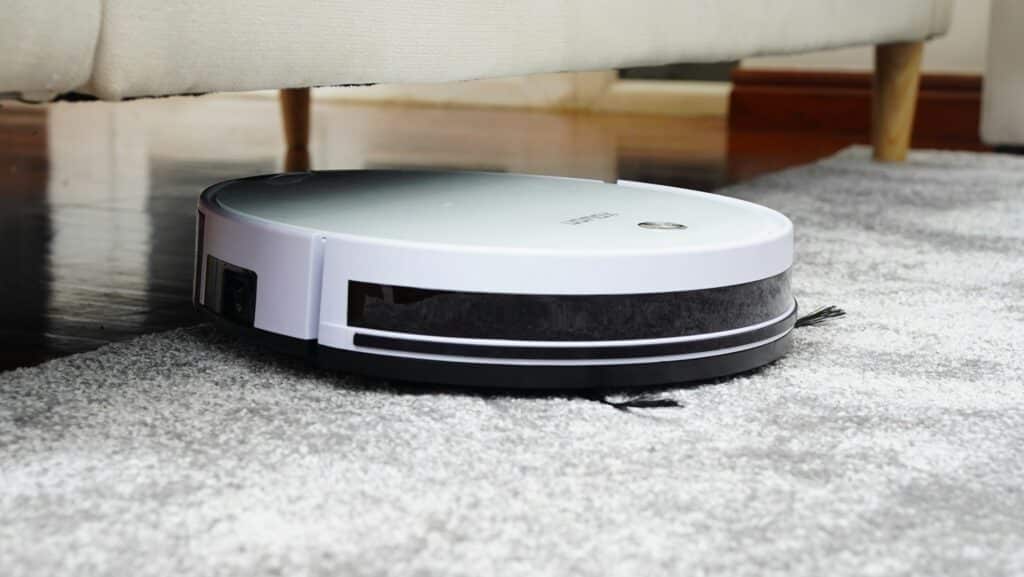Robotic vacuum cleaners, once a novelty, have become a staple in many households, turning a job that was once seen as tedious into a mere afterthought. They represent the silent force in our homes, working unobtrusively to maintain spotless floors—but at what cost?
Understanding the energy consumption of these robot vacuum devices is not just about being environmentally conscious; it also impacts our electricity bills and, ultimately, our wallets. In this in-depth exploration, we’ll quantify what goes on under the hood, and how you can ensure your robot vacuum is as efficient as possible.
Understanding How Much Power Does A Robot Vacuum Use

Determining how much power a robot vacuum uses is a crucial part of evaluating its efficiency. On average, these innovative devices consume between 30 and 90 watts per cleaning cycle, significantly less compared to traditional vacuum cleaners.
This variance in energy consumption mainly depends on the vacuum’s model, the cleaning mode selected, and the duration of its operation.
By understanding these factors, users can better manage their household’s energy usage and make informed decisions about the sustainability and cost-effectiveness of employing a robotic vacuum cleaner in their cleaning regimen.
- Watts (W) measure the rate of energy transfer—in simpler terms, how fast a device consumes energy.
- Amps (A) are the units for electrical current—a measure of how much electrical charge flows through a circuit over a specific time.
- Voltage (V) is the electric potential difference between two points in a circuit. Together with amperage, voltage contributes to wattage through Ohm’s Law (W = V * A).
When it comes to household appliances, it’s all about the watts. Vacuum cleaners, robot or traditional, can be power-hungry appliances. Robotic vacuum models often have a variable power setup, ranging from 20-200 watts, depending on the cleaning mode and its suction power needs.
Factors Affecting a Robot Vacuum’s Power Consumption

Various factors influence how much electricity a robot vacuum utilizes to get the job done.
- Floor Type: Suction power requirements are higher for carpets and rugs compared to hardwood or tile floors.
- Navigation Efficiency: Smarter navigation can lead to less time running and more time spent cleaning.
- Battery Life: Longer battery life can mean fewer charging cycles, leading to better overall energy use.
Case Studies and Real-World Data
Real-world data offers a more concrete look at energy use.
Comparing multiple models can provide insights into how various features affect energy consumption. For example, a more powerful motor may clean faster, but it can also drain the battery quicker.
Similarly, we can analyze homes with different layouts and flooring types. A larger home with more rooms will likely require a longer running time from the robot vacuum, affecting energy consumption.
Related: Harnessing New Technologies For Your Retail Business Growth
Practical Tips for Reducing Power Consumption
Efficient use of your robot vacuum can save power and extend the lifespan of the unit.
- Optimize the Cleaning Schedule: Running the vacuum less frequently or during off-peak electricity hours can reduce the overall power consumption.
- Regular Maintenance: Keeping brushes and filters clean ensures that the vacuum runs at peak efficiency, using less power during operation.
Environmental and cost implications
The environmental impact of robot vacuum energy use is a growing concern.
Considering the source of your electricity (renewable vs. non-renewable) is a step toward understanding your robot vacuum’s carbon footprint.
Understanding cost implications also comes into the picture. With energy costs on the rise, finding ways to use less power and save money is more important than ever.
Conclusion
With energy efficiency at the forefront of modern living, knowing the power consumption of your robot vacuum is an important part of responsible consumption.
By understanding what drives energy use, you can make informed decisions about the purchase and usage of these handy devices.
Remember, the efficiency of your robot vacuum ultimately lies in your hands, as does the power to keep your floors clean, your bills low, and your carbon footprint in check.
Share your experiences using robot vacuums or any additional insights into this topic. Whether you’re a homeowner or a tech expert, we’d love to hear from you!




